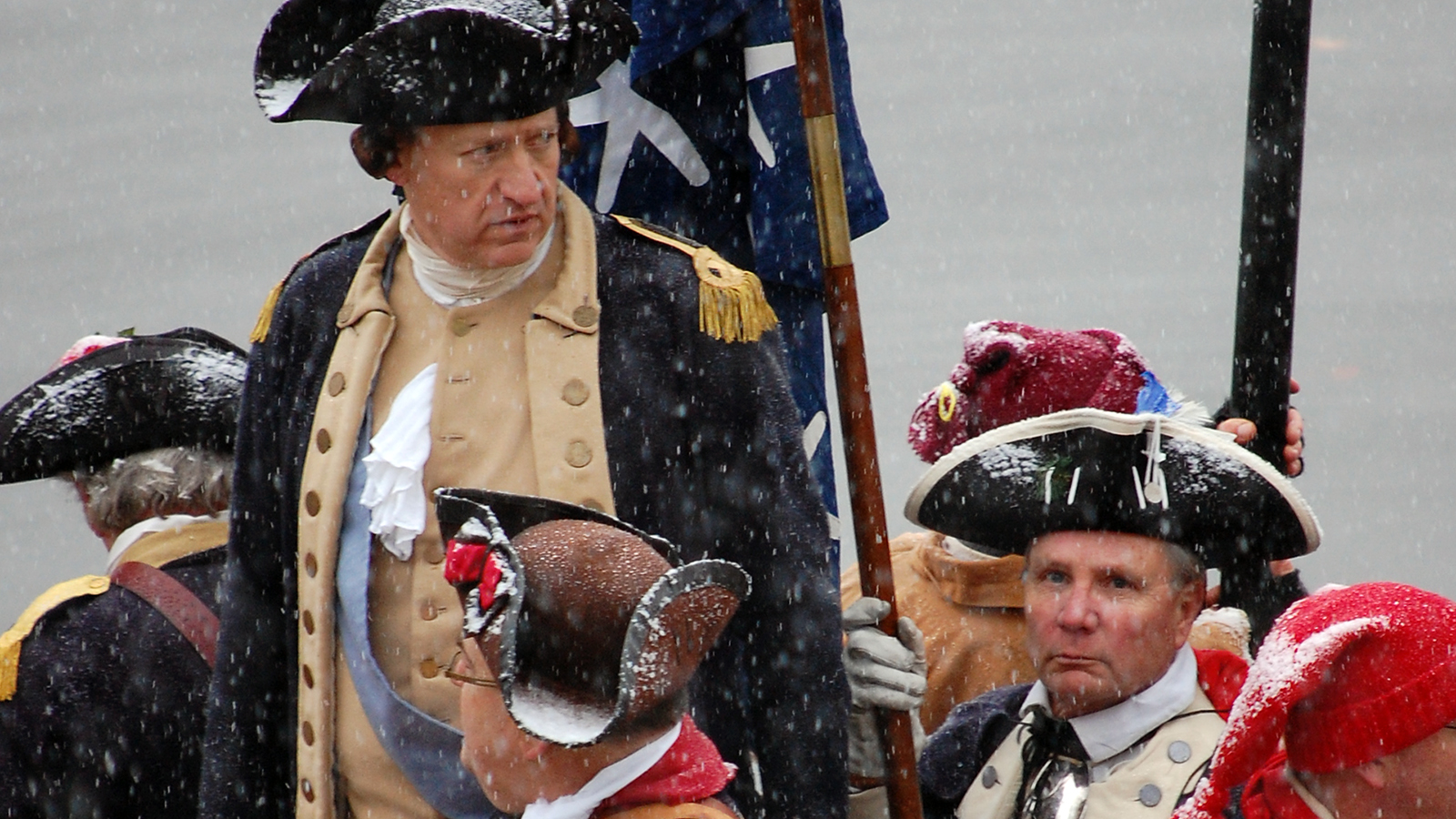
Following their retreat across New Jersey, an air of desperation shrouded General George Washington and his troops as they arrived in Bucks County in early December 1776.
Having suffered defeat after defeat – and with winter bearing down on them – food and warm clothing were in short supply. Washington watched his army shrink as soldiers deserted and enlistments expired.
And yet, within a month, their fortunes – along with the tide of the war – would turn dramatically. From the Christmas night crossing through the Battle of Princeton, Washington always seemed to be one step ahead of his opponent.
“You can’t help but notice the difference in both the approach and the results in a relatively short amount of time,” says Kimberly McCarty, Washington Crossing Historic Park’s curator.
What changed?
“I don’t think there’s a simple answer,” she says. “It’s more the result of a constellation of things, including a good deal of luck.”
Counted among that good fortune is the time and space William Howe, Commander in Chief of the British Army in North America at the time, granted Washington and his army in their retreat across New Jersey. Washington appears to have spent much of it ruminating on his tactics and the lack of results they yielded up to that point in the war.
“He was largely self-taught in the craft of leadership and military command. He was always reading,” McCarty says. His strategy, in turn, leaned heavily on traditional battlefield confrontations. But after the retreat, he became far more flexible.
“He seems to adopt a ‘Fabian’ approach, a strategy where you avoid big one-on-one battles and instead conduct your fighting in more of a relentless hit-and-run style that wears down the enemy,” McCarty says. The tactic was common in the French and Indian War (1754-1763), in which Washington fought as a major in the militia of the British province of Virginia. “The basic idea is to keep the army in the field and attack smaller outposts, things that if you lose, you’re not risking everything.”
Washington always solicited the input of those around him and could be persuaded, McCarty says. “That remained his approach when he became president and formed the country’s first cabinet. He wanted discussion,” she says. “But he also knew that his word was the last word.”
That mentality also contributed to the Continental Army’s newfound agility. By stark contrast, the British army’s decisions were made through a strict hierarchy.
Historians debate when exactly Washington began employing this new strategy. McCarty believes it’s in play by the Battle of Trenton.
“By then, Washington has come to realize that what he needs most is for the Continental Army to survive,” she says. “As long as they’re out there, the British can’t say they’ve quashed the rebellion.”
The debate endures because the Continental Army continued to engage in the occasional battlefield confrontation, including the Battle of Princeton.
“I believe there’s a sensible explanation for that. Rather than make wholesale changes, Washington began assessing each scenario on its own merit and tailoring his strategy accordingly,” McCarty says. “And, yes, he finally found some success. But the results, overall, were mixed.”

